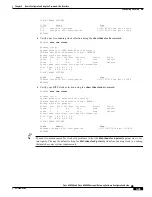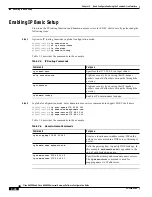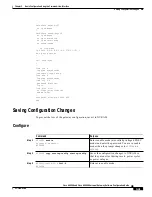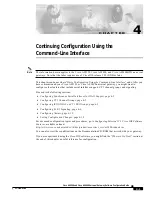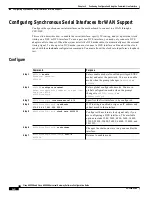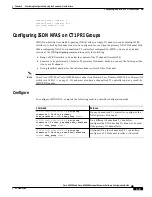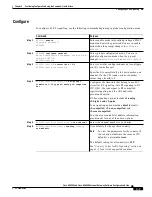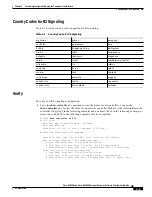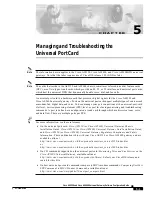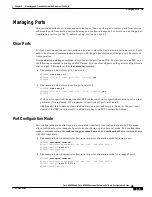
4-6
Cisco AS5350 and Cisco AS5400 Universal Gateway Software Configuration Guide
OL-3418-02 B0
Chapter 4
Continuing Configuration Using the Command-Line Interface
Configuring E1 R2 Signaling
Take a Channel or Interface Out of Service
You can take a specified channel or an entire PRI interface out of service or put it into one of the other
states that is passed in to the switch.
To do so, complete one of the following tasks in interface configuration mode:
These are the supported state values:
•
0—In service
•
1—Maintenance
•
2—Out of service
Verify
•
Monitor NFAS groups by entering the show isdn nfas group number command:
AS5350# show isdn nfas group 0
ISDN NFAS GROUP 0x0 ENTRIES:
The primary D is Serial0:23.
The backup D is Serial1:23.
There are 2 total nfas members.
There are 24 total available B channels.
The primary D-channel is DSL 0 in state IN SERVICE.
The backup D-channel is DSL 1 in state STANDBY.
The current active layer 2 DSL is 0.
Configuring E1 R2 Signaling
R2 signaling is an international signaling standard that is common to channelized E1 networks. You can
configure a channelized E1 interface to support different types of R2 signaling, used in older analog
telephone networks.
Note
The Cisco implementation of R2 signaling has DNIS support turned on by default. If you enable the ANI
option, the collection of DNIS information is still performed. Specifying the ANI option does not disable
DNIS collection. DNIS is the number being called. ANI is the caller's number. For example, if you are
configuring gateway A to call gateway B, then the DNIS number is assigned to gateway B, the ANI
number is assigned to gateway A. Also, note that ANI is similar to caller ID.
Command
Purpose
AS5350(config-controller)# isdn service dsl
number b_channel number state state-value
Takes an individual B channel out of service or set
it to a different state.
AS5350(config-controller)# isdn service dsl
number b_channel 0 state state-value
Sets the entire PRI interface to the specified state.


